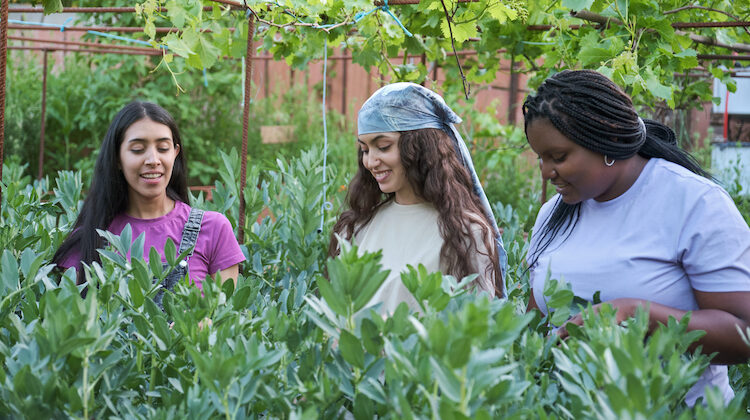
I remember the day I decided to revive our neighborhood. The air felt heavy with the usual mix of car exhaust, faint desperation, and simmering dreams. It was a Tuesday, and I’d just wrapped up a meeting with a family struggling to stretch their food stamps. As I walked back to the office, I noticed the empty lot on Third and Elm—the one that had become a dumping ground for everything from broken appliances to shattered ambitions.
That lot haunted me. Every time I saw it, I imagined what it could be: a vibrant space where hope could take root. But I also knew what the neighborhood needed more than hope. We needed food. Real, fresh food.
That night, I stayed up sketching a plan in my notebook. A community garden. A place where we could grow vegetables and cultivate something even rarer around here: pride. I was no green thumb—I could barely keep a houseplant alive—but I knew how to connect people and rally them around an idea. That, I thought, might just be enough.
The next morning, I pitched the idea at the community center. The response? A mix of raised eyebrows, shrugs, and one or two mumbled “good lucks.” Most people had bigger worries than cucumbers. Mrs. Jimenez, a retired teacher, muttered, “Who’s got time for that? We can’t even keep the streetlights on.”
But I kept pushing. I showed them my notebook sketches, pointing to where tomatoes could grow, maybe some kale, even sunflowers for the kids. I promised to secure donations for seeds and tools. Slowly, I saw a flicker of curiosity in their eyes. Curiosity wasn’t commitment, but it was a start.
The first obstacle was funding. Grants for projects like this weren’t easy to come by. After weeks of rejection emails, I realized I’d have to get creative. I held bake sales, car washes, even a bingo night at the church basement. I called in every favor I was owed and wrote letters to anyone who might listen. Finally, we scraped together enough money to get started.
The next challenge was the lot itself. Clearing the debris felt impossible at first, but then the neighborhood kids joined in. I promised them we’d plant strawberries—“the sweet kind, better than any candy”—and that was all the motivation they needed. Armed with gloves and trash bags, we worked together, laughing and groaning as we unearthed old tires and rusted springs.
Then came the planting. Mrs. Jimenez showed up, to my surprise, holding a stack of seed packets. “I’m not saying this’ll work,” she said, “but I’ve got grandkids who like spinach, so let’s try.” She became our resident expert, teaching the kids how to bury seeds and water them just enough.
The garden grew—slowly at first, then suddenly, like it had been waiting for us all along. The first time we harvested a batch of radishes, the kids were ecstatic. One boy, Jamal, couldn’t believe you could pull food right out of the dirt. “It’s like magic,” he said, holding up a clump of soil-covered roots.
Word spread. More neighbors started stopping by, at first just to look, then to help. We added picnic tables and painted a mural on the fence. The garden became more than a source of food; it became a meeting place, a classroom, a sanctuary.
One day, I looked up from planting squash to see a reporter snapping photos. “We heard about your garden,” she said. “Other neighborhoods want to start something similar.” The article came out the following week, and before long, people from all over the city were reaching out for advice. A few months later, I visited another community garden across town, started by a single mom who’d read about us. She told me how it had changed her block, how kids there were eating better and getting along more.
I wasn’t a hero or a savior—just a social worker with a vision and a stubborn streak. But looking at that garden, thriving in the middle of our gritty streets, I knew we’d done something important. We’d turned a forgotten lot into a patch of life, proof that even the smallest seeds can grow into something remarkable with enough care.
Now, every time I pass by, I see kids munching on cherry tomatoes, neighbors chatting over baskets of greens, and flowers swaying in the breeze. The air feels lighter now, filled with something new: possibility.